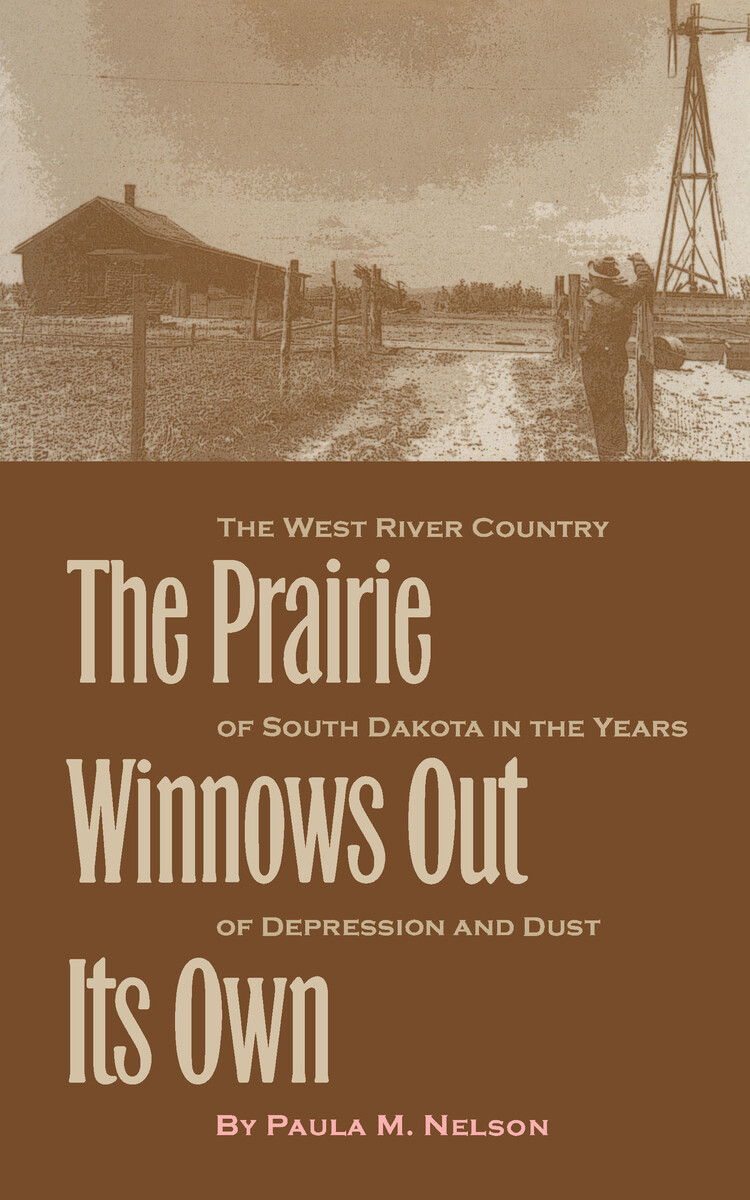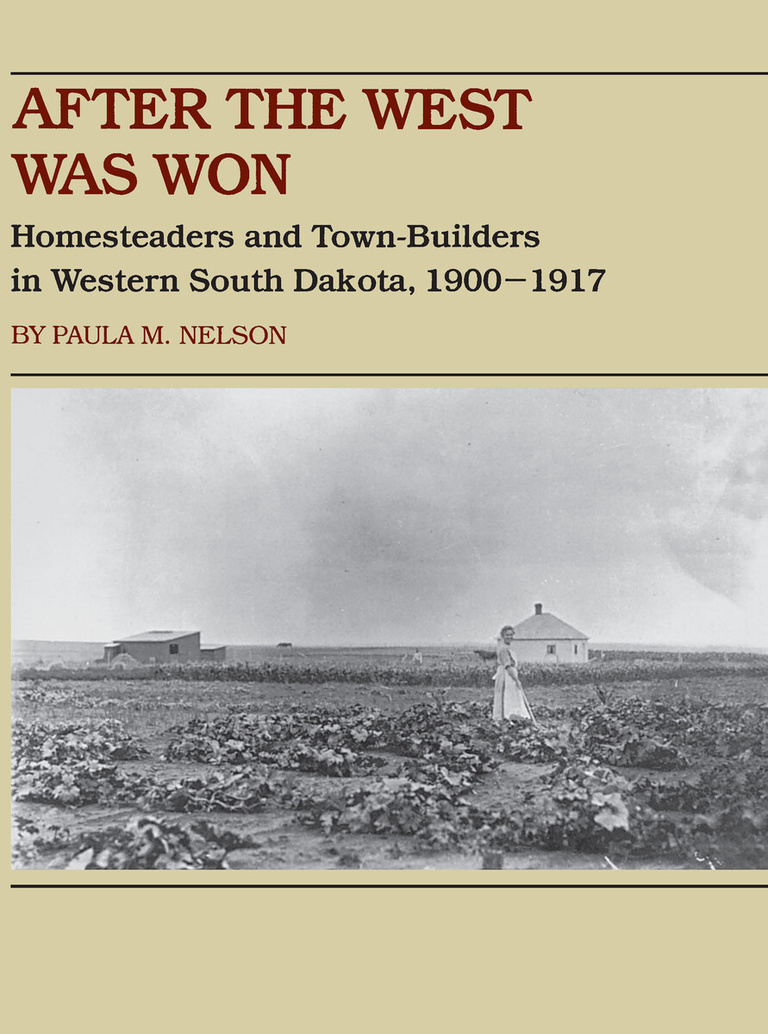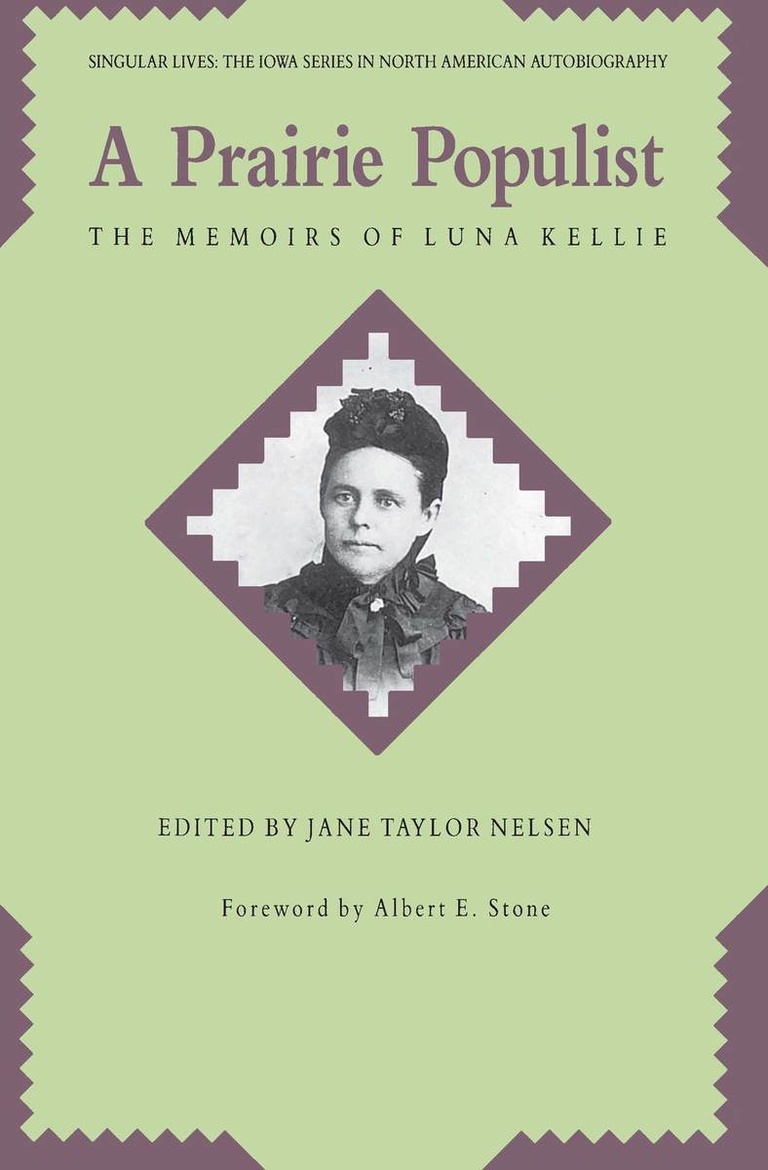Between 1900 and 1915, in the last great land rush, over one hundred thousand homesteaders flooded into the west river country of South Dakota, a land noted for its aridity and unpredictable weather, its treelessness, and its endless sky. The settlers of “the last, best west” weathered their first crisis in the severe drought of 1910-1911, which winnowed out many of the speculators and faint of heart; they abandoned their founding hopes of quick success and substituted a new ethos of “next year country”—while this year was hard, next year would be better, an ironic phrase at once optimistic and fatalistic.
“Next year,” however, was in many of those years not better. The collapse of the agricultural economy in the immediate aftermath of the boom years of World War I set in motion a pattern of regional decline amid national prosperity and cultural change: the rise of radio and mass culture increased rural folks' awareness of national trends and tastes, a development which paradoxically increased their own sense of remoteness and isolation. The failure of the farm economy to recover to any substantial degree in the twenties caused a less dramatic but cumulatively greater impact on the west river country's population and prospects—a second great crisis.
The Great Depression and the dustbowl years of the thirties were the greatest test of the west river people. The drought of 1910-1911, heretofore seen as the benchmark of bad times, faded even in the remembrances of the original pioneers in the face of the thirties' relentless drought, grasshoppers, blowing dust, and the accompanying starvation, struggle, and despair. The Depression in the west river country was a blast furnace from which a hardened yet still hopeful people emerged, scathed but undefeated. The Prairie Winnows Out Its Own is the voice of this experience.
“Nelson's story...reveals a bond between people and the land so strong that only the most overwhelming adversity could finally break it. It is a fascinating tale of hopes raised and dreams shattered within a single generation. One cannot help being moved.”—John C. Hudson, Northwestern University
“A marvelous job of presenting the lives of west river South Dakotans during times of extreme stress in a way that should touch all readers' emotions regardless of where they live.”—Dorothy Schwieder, Iowa State University
“Paula Nelson has written a fascinating economic and social history of South Dakota's west river country in the 1920s and 1930s. Engagingly written and based on solid research, her book provides the facts and feelings within a region undergoing fundamental change. This book will inform scholars and interest general readers, especially those who ever lived in the region.”—Gilbert C. Fite, author of The Farmers' Frontier, 1865-1900
“Paula Nelson has done it again. Previously she described the boom and must of the American West's last frontier, South Dakota's west river country, in her award-winning After the West Was Won. The west river country is again the place, and the 1920s and 1930s are the time, for her new social history sequel. Seldom are the Plains chronicled with such passion and precision.”—John R. Wunder, Center for Great Plains Studies, University of Nebraska-Lincoln



